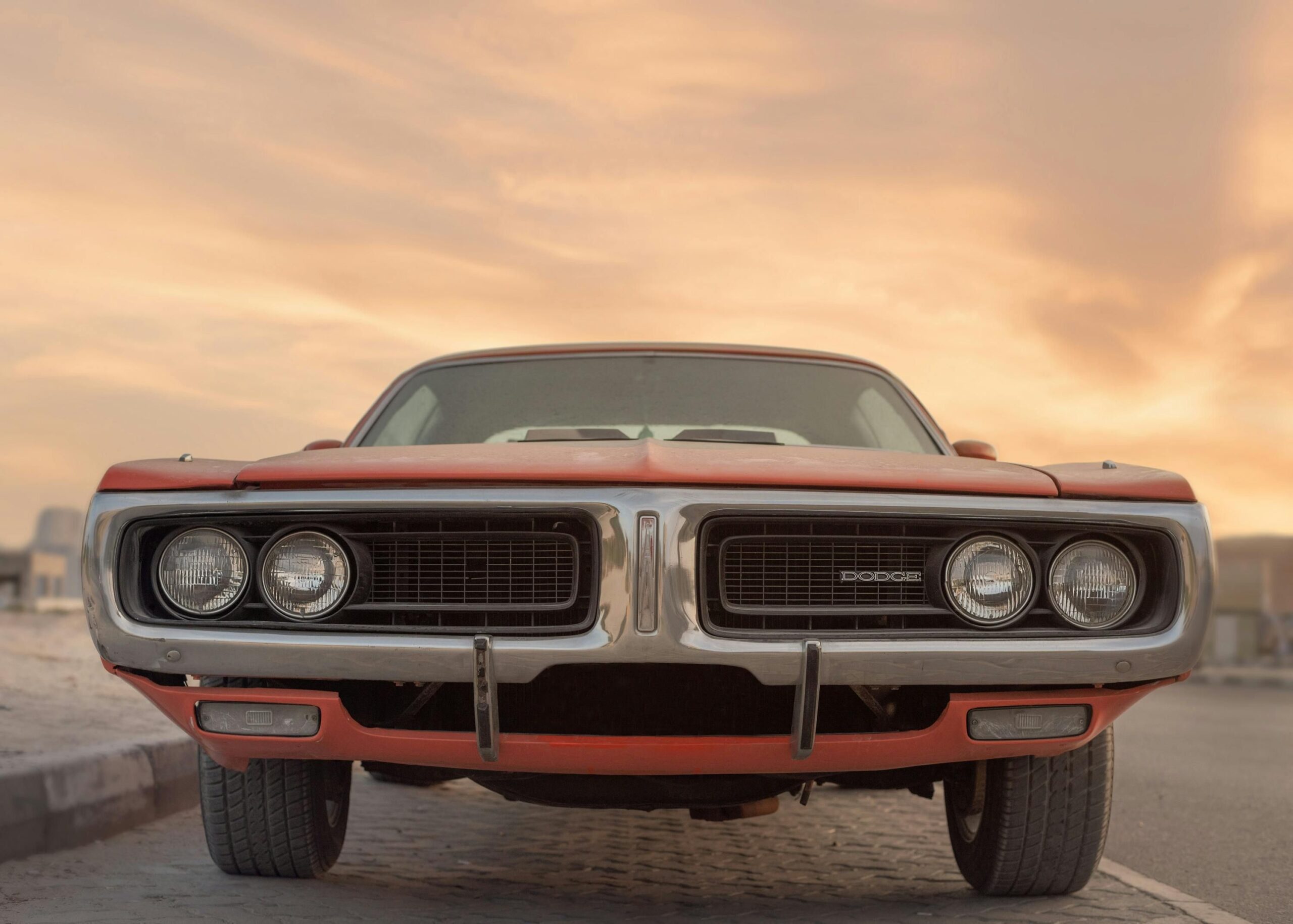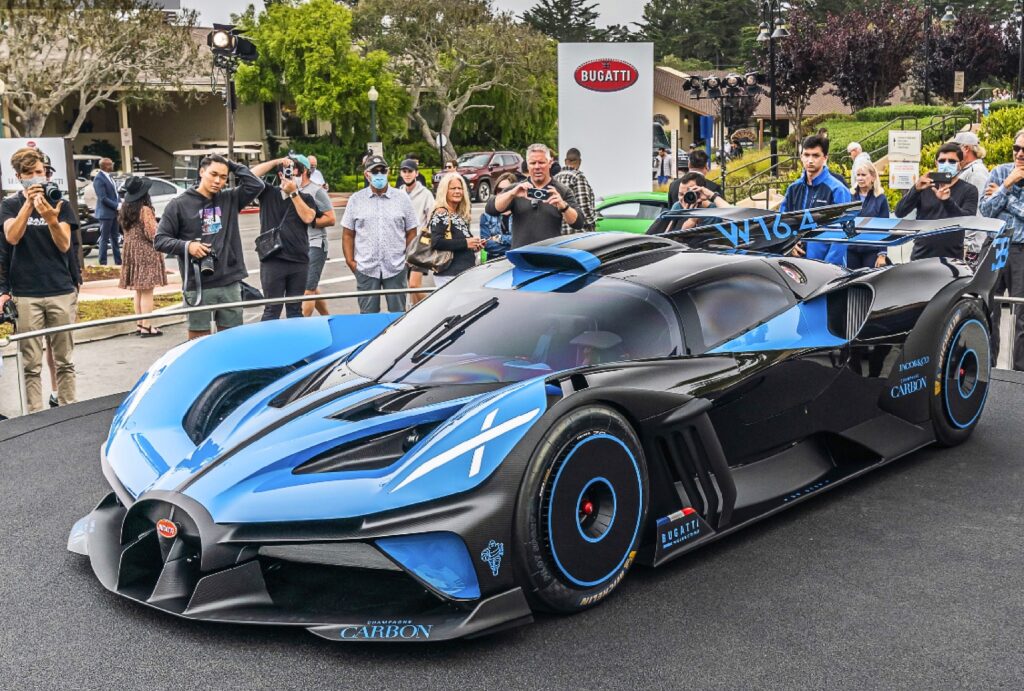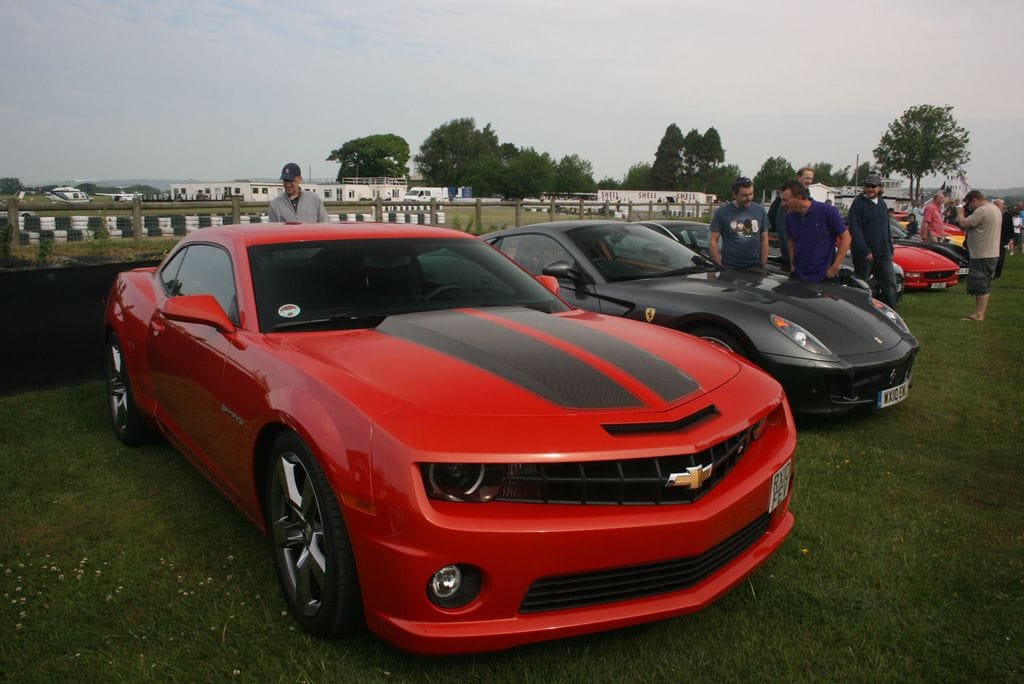
The debate between American muscle and European sports cars and supercars is as old as the asphalt itself, a continuous head-to-head battle that ignites passions and fuels the desires of automotive enthusiasts worldwide. While European marques have long held a seemingly unshakeable grasp on the “supercar” title, often synonymous with exclusivity, sleek design, and stratospheric price tags, the narrative of American automotive prowess has quietly, yet powerfully, evolved. It’s a tale of brawn meeting brains, where raw power is increasingly paired with sophisticated engineering to create vehicles that not only compete but often dominate.
Indeed, the concept of an “American supercar” is often met with a raised eyebrow, largely because European manufacturers historically design their cars to an exacting specification, fostering an aura of exclusivity. American designers, on the other hand, have traditionally focused on delivering exceptional performance within a more accessible budget. This difference has blurred the lines between supercars and sports cars, pushing American muscle cars further into an elite category, even if they don’t always fit the traditional supercar stereotype. Many of these machines look like supercars, drive like supercars, and perform like supercars, proving that a different philosophy can lead to equally, if not more, potent results.
From the roaring engines of classic muscle cars like the Pontiac GTO and Plymouth Barracuda to the technologically advanced beasts of today, America has consistently produced vehicles capable of blistering speeds and track-shattering performance. Modern muscle cars, in particular, have transcended their straight-line origins, integrating cutting-edge technology, advanced aerodynamics, and refined driving dynamics that would have been unimaginable to their predecessors. They represent the pinnacle of American engineering, offering mind-bending acceleration and impressive handling that often outstrip their European exotic counterparts, all while maintaining a level of usability and relative affordability. It’s time to celebrate these true American icons that have rewritten the rules of high-performance motoring, proving that brute force, when refined, is a formidable weapon against global competitors. Join us as we explore the first five machines that have left an indelible mark on the automotive landscape, demonstrating American dominance in the ongoing horsepower war.
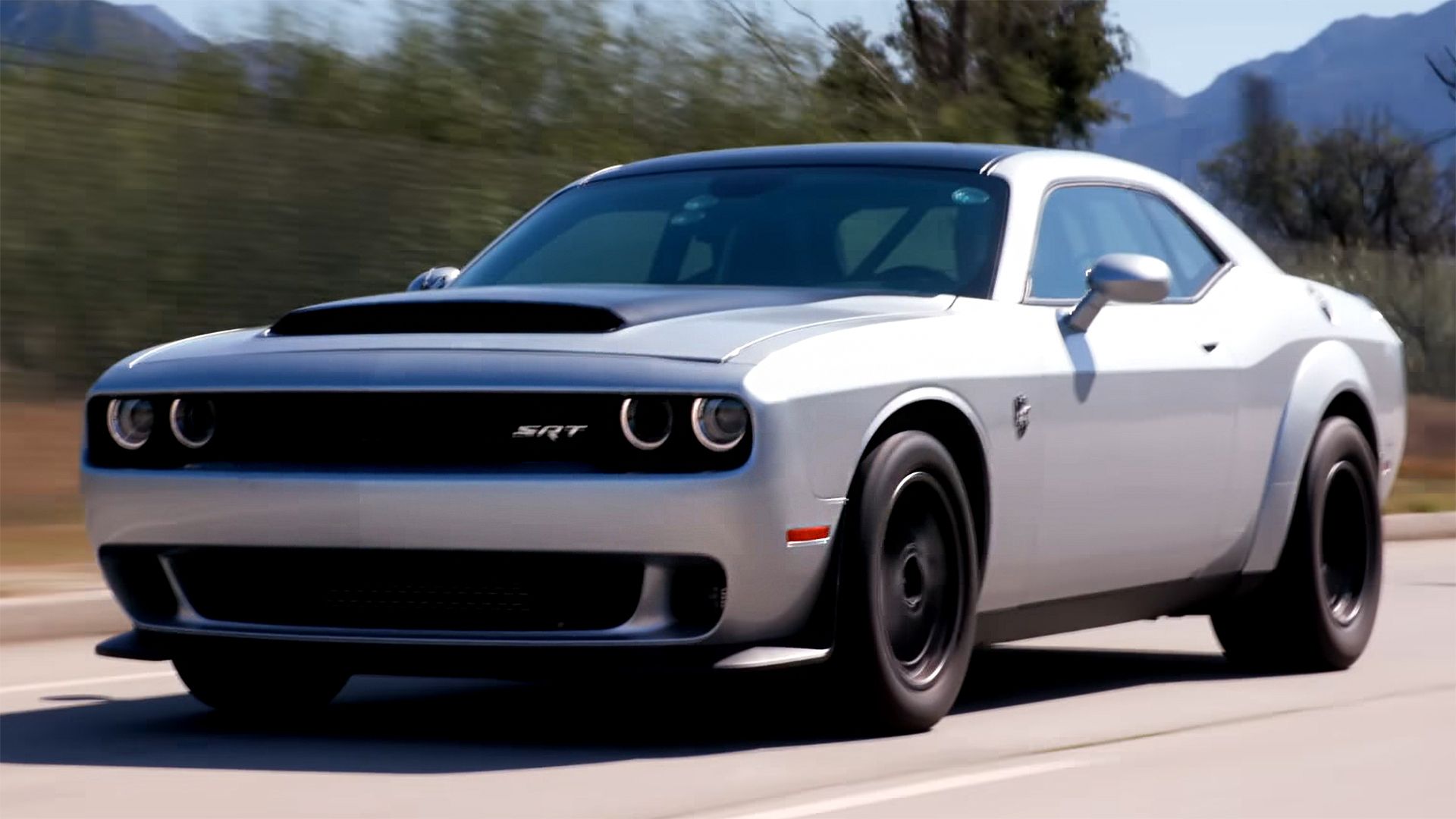
1. **2023 Dodge Challenger SRT Demon 170**The 2023 Dodge Challenger SRT Demon 170 stands as the ultimate expression of American muscle car excess, a fitting and explosive crescendo to Dodge’s combustion-engine performance legacy before the shift towards electrified vehicles. Named for its astounding 170-proof ethanol fuel compatibility, this final evolution of the Challenger platform didn’t just break records; it shattered them, redefining the capabilities of a production car straight from the showroom floor. Its very existence is a testament to Dodge’s unwavering commitment to raw, unadulterated power, setting an almost insurmountable benchmark for future performance vehicles.
At the very core of the Demon 170 lies a supercharged 6.2-liter HEMI V8 engine, an absolute marvel of engineering that produces an almost unbelievable 1,025 horsepower and 945 lb-ft of torque when fueled by E85 ethanol. These figures, just a decade ago, would have been deemed impossible for a production vehicle. Even on standard pump gas, the engine remains a powerhouse, delivering 900 horsepower, effortlessly eclipsing nearly every other production vehicle available to the public. This extreme power enables staggering performance figures that read like typographical errors: 0-60 mph in a blistering 1.66 seconds, making it faster than many multi-million-dollar hypercars, and a quarter-mile time of 8.91 seconds at 151.17 mph.
Dodge engineers left no stone unturned in their pursuit of drag racing dominance, integrating a suite of specialized technologies. Features like the TransBrake function, which allows the engine to build boost while stationary, an upgraded SRT Power Chiller using the air conditioning system to cool intake air, and a strengthened driveline all contribute to managing and unleashing its immense torque. Further emphasizing its drag-focused engineering, the Demon 170 is equipped with specialized Nitto drag radial tires, a widebody design to house the massive rubber, and a suspension system configurable for optimal weight transfer during aggressive launches, famously capable of lifting its front wheels off the ground—a feat previously unheard of in a production vehicle. Limited to just 3,300 units, the Demon 170 is not merely the fastest muscle car ever made; it is a profound testament to American engineering prowess and a fitting bookend to the Challenger’s storied production run.
Car Model Information: 2024 RAM 1500 Laramie
Name: Dodge Challenger (2008)
Production: 2008–2023
ModelYears: 2008–2023
Assembly: Brampton, Ontario
Designer: Brian Nielander,
Predecessor: ubl
Successor: Dodge Charger (2024)
Caption: 2017 Dodge Challenger R/T Scat Pack
Manufacturer: Dodge
Class: Muscle car
BodyStyle: notchback,coupe
Engine: unbulleted list
Abbr: on
Order: Chrysler Hemi engine#6.4 Apache / 392 Apache,V8 engine
Layout: Front-engine, rear-wheel-drive layout,Front-engine, all-wheel-drive layout
Transmission: Ultradrive#42RLE,5G-Tronic,Tremec TR-6060 transmission,ZF 8HP transmission
Wheelbase: cvt
Length: cvt
Width: cvt
Height: cvt
Categories: 2000s cars, 2010s cars, 2020s cars, All articles that are excessively detailed, All articles with style issues
Summary: The Dodge Challenger is a full-size muscle car that was introduced in early 2008 originally as a rival to the evolved fifth-generation Ford Mustang and the fifth-generation Chevrolet Camaro.
In November 2021, Stellantis announced that 2023 model year would be the final model year for both the LD Dodge Charger and LA Dodge Challenger, as the company will focus its future plans on electric vehicles rather than fossil fuel powered vehicles, due to tougher emissions standards required by the Environmental Protection Agency for the 2023 model year. Challenger production ended on December 22, 2023, and the Brampton, Ontario assembly plant will be re-tooled to assemble an electrified successor.
Get more information about: Dodge Challenger (2008)
Buying a high-performing used car >>>
Brand: Dodge Model: Challenger SRT Demon 170
Price: $37,798 Mileage: 34,409 mi.
Read more about: The Elite Six: Modern Muscle Cars That Deliver Unapologetically Low Fuel Economy
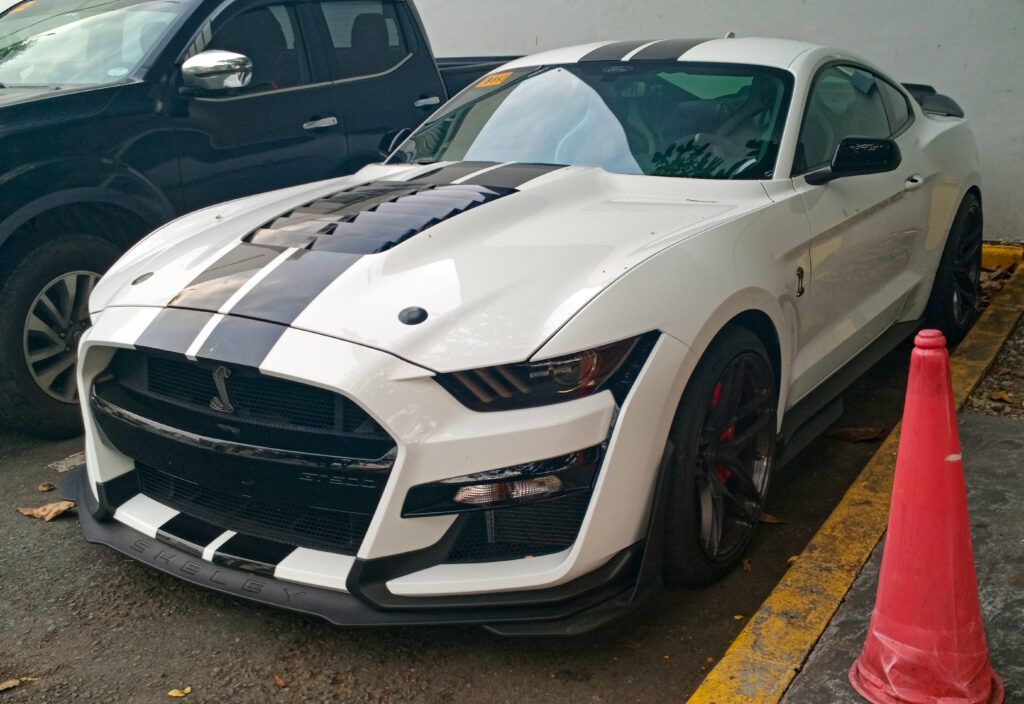
2. **2020 Ford Mustang Shelby GT500**The 2020 Ford Mustang Shelby GT500 represents the pinnacle of Ford’s Mustang performance lineup, standing as the most powerful production Ford ever created. This modern revival of the legendary GT500 nameplate perfectly melds brutal straight-line acceleration with a level of handling prowess that was once unimaginable for a muscle car, showcasing how far the breed has evolved from its historical drag strip origins. It is a harmonious blend of raw power and sophisticated control, designed to conquer both the strip and the track.
Under the hood, this beast is propelled by a hand-built 5.2-liter supercharged V8 engine, unleashing a staggering 760 horsepower and 625 lb-ft of torque. Unlike its GT350 sibling, which uses a flat-plane crank, the GT500 employs a traditional cross-plane crankshaft, better suited to harness the immense forces generated by its 2.65-liter Eaton supercharger, which spins at up to 22,000 rpm. This potent powertrain enables the GT500 to rocket from 0-60 mph in a mere 3.3 seconds and devour the quarter-mile in just 10.7 seconds at 132 mph, numbers that confidently challenge exotic supercars.
A significant differentiator for this GT500 is its sophisticated 7-speed dual-clutch transmission (DCT), developed in collaboration with Tremec. This advanced transmission is capable of lightning-fast shifts in just 80 milliseconds, far quicker than any human could manage with a manual gearbox. While the absence of a manual option initially stirred debate among purists, its inclusion was undeniably crucial to achieving the car’s blistering performance figures. Beyond straight-line speed, the GT500’s impressive capabilities are extended by its MagneRide active suspension, massive Brembo brakes with 16.5-inch front rotors, and an available Carbon Fiber Track Package featuring Michelin Pilot Sport Cup 2 tires. Extensive aerodynamic development, including a rear wing generating over 550 pounds of downforce, ensures this powerful machine remains firmly planted, completing its functional performance aesthetic and cementing its place among the all-time great American muscle cars.
Car Model Information: 2024 RAM 1500 Laramie
Name: Shelby Mustang
Caption: 1965 Shelby Mustang GT350
Manufacturer: Unbulleted list
Aka: Unbulleted list
Production: Unbulleted list
Designer: John Chun
Assembly: Unbulleted list
Class: Unbulleted list
Platform: Unbulleted list
Related: Ford Mustang (first generation),Ford Mustang (fifth generation)
Layout: Front-engine, rear-wheel-drive layout
Categories: 1970s cars, 2000s cars, 2010s cars, 2020s cars, All Wikipedia articles written in American English
Summary: The Shelby Mustang is a high-performance variant of the Ford Mustang built by Shelby American from 1965 to 1967 and by the Ford Motor Company from 1968 to 1970.
In 2005, Ford revived the Shelby nameplate for a high-performance model of the fifth-generation Ford Mustang.
Get more information about: Shelby Mustang
Buying a high-performing used car >>>
Brand: Ford Model: Mustang Shelby GT500
Price: $37,798 Mileage: 34,409 mi.
Read more about: Lost in Time: Uncovering the Eerie, Dust-Laden Legacy of an Abandoned Classic Car Museum
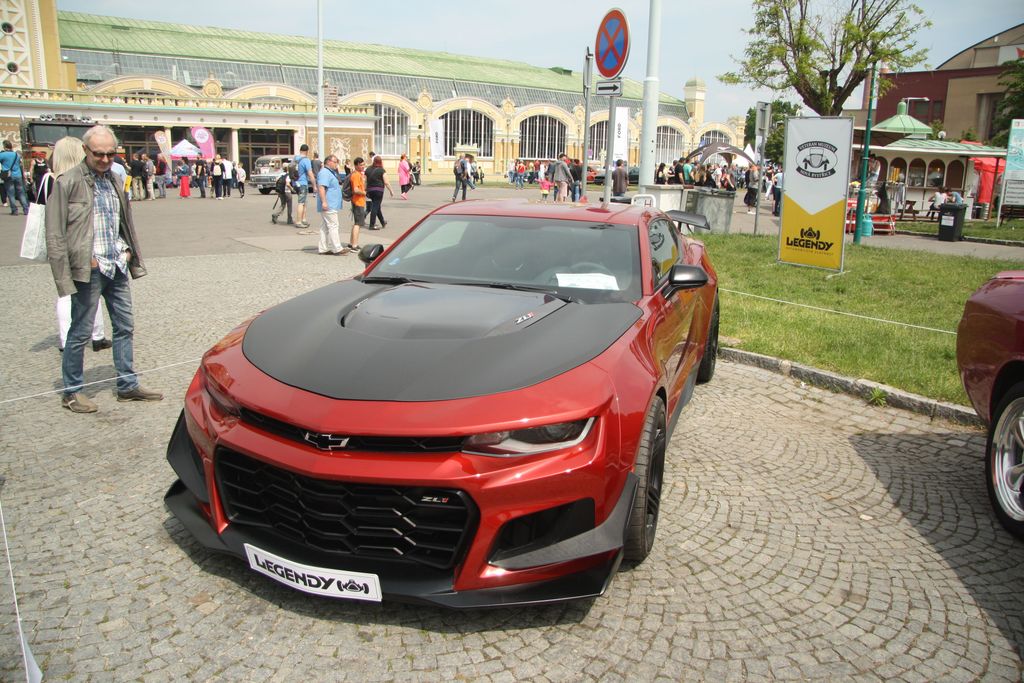
3. **2019 Chevrolet Camaro ZL1 1LE**The 2019 Chevrolet Camaro ZL1 1LE stands as the absolute zenith of Camaro performance, a masterclass in blending traditional muscle car straight-line speed with track-focused handling capabilities that can genuinely embarrass exotic sports cars many times its price. This iteration, transformed by the ZL1 1LE package, elevates the already formidable ZL1 into a precision instrument. It is engineered to deliver blistering lap times while fiercely maintaining its impressive quarter-mile credentials, showcasing the dual-purpose nature that defines modern American performance.
Powering this track monster is the robust supercharged 6.2-liter LT4 V8 engine, identical to that found in the standard ZL1, producing an authoritative 650 horsepower and 650 lb-ft of torque. Initially offered exclusively with a six-speed manual transmission featuring rev-matching, Chevrolet later introduced a 10-speed automatic option, further enhancing its straight-line performance. Regardless of the transmission choice, the ZL1 1LE is capable of rocketing from 0-60 mph in approximately 3.5 seconds and demolishing the quarter-mile in around 11.5 seconds at 125 mph, numbers that underscore its formidable power and agility.
What truly sets the 1LE variant apart from the standard ZL1 are its comprehensive chassis and aerodynamic enhancements. The most visible addition is a massive carbon fiber rear wing, which, along with a larger front splitter and dive planes, generates significant downforce at track speeds, ensuring the car remains glued through high-speed corners. The suspension system is a cornerstone of this upgrade, featuring Multimatic DSSV (Dynamic Suspension Spool Valve) dampers, technology derived from Formula 1 racing, providing exceptional control during aggressive driving without entirely sacrificing ride compliance. This, combined with model-specific spring rates, contributes to extraordinary mechanical grip and precise handling. Weight reduction efforts, including forged aluminum wheels and massive Goodyear Eagle F1 SuperCar 3R tires, further enhance its performance. The ZL1 1LE famously lapped the Nürburgring Nordschleife in just 7:16.04, a remarkable achievement that solidified its status as one of the most capable American performance cars ever produced.
Car Model Information: 2024 RAM 1500 Laramie
Name: Chevrolet Camaro
Manufacturer: Chevrolet
Production: 1966–2002,2009–2023
ModelYears: 1967–2002,2010–2024
Class: Pony car
BodyStyle: coupe,convertible
Platform: GM F platform,GM Zeta platform,GM Alpha platform
Layout: Front-engine, rear-wheel-drive layout
Categories: 1970s cars, 1980s cars, 1990s cars, 2+2 coupés, 2000s cars
Summary: The Chevrolet Camaro is a mid-size American automobile manufactured by Chevrolet, classified as a pony car. It first went on sale on September 29, 1966, for the 1967 model year and was designed to compete with the Ford Mustang. The Camaro shared its platform and major components with the Firebird, produced by General Motors’ Pontiac division that was also introduced for the 1967 model year.
Four distinct generations of the Camaro were developed before production ended in 2002. The nameplate was revived on a concept car that evolved into the fifth-generation Camaro; production started on March 16, 2009.
Production of the sixth generation of the Camaro ended in December 2023, for the 2024 model year.
Get more information about: Chevrolet Camaro
Buying a high-performing used car >>>
Brand: Chevrolet Model: Camaro ZL1 1LE
Price: $37,798 Mileage: 34,409 mi.
Read more about: These Are The Fastest Muscle Cars Ever: From Classic Legends to Modern Monsters
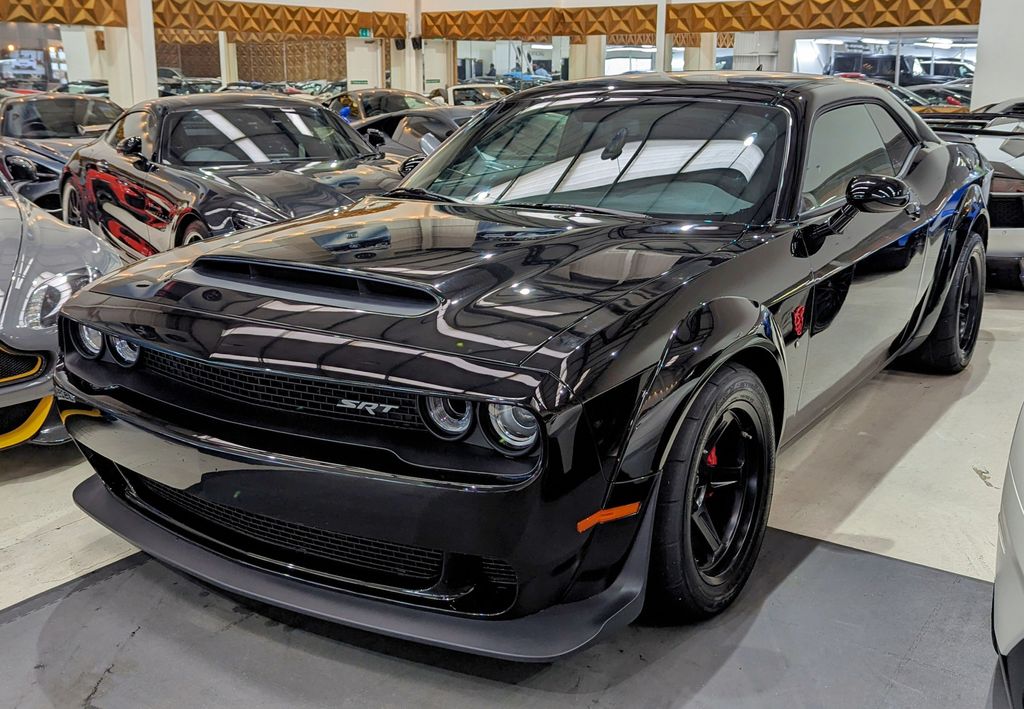
4. **2018 Dodge Challenger SRT Demon**The 2018 Dodge Challenger SRT Demon introduced a seismic shift in factory muscle car performance upon its debut, firmly establishing itself as the world’s first purpose-built, production drag racing car. Limited to a select 3,300 examples, the Demon was conceived with a singular, unyielding objective: to utterly dominate the quarter-mile drag strip, all while miraculously retaining its street-legal status. It was a defiant statement of intent, a street-legal monster engineered for blistering straight-line assaults.
At the very core of this drag strip behemoth lurked a supercharged 6.2-liter HEMI V8 engine, initially churning out 808 horsepower and a massive 717 lb-ft of torque on 91-octane pump gas. When equipped with the optional Demon Crate performance parts and fueled by 100+ octane race fuel, its output soared to an astonishing 840 horsepower and 770 lb-ft of torque. This explosive power enabled the Demon to achieve several production car firsts: the quickest 0-60 mph time at an astounding 2.3 seconds, the first production car certified by Guinness World Records for lifting its front wheels during launch (a wheelie), and the quickest quarter-mile time of 9.65 seconds at 140 mph. These figures are not just impressive; they are record-breaking.
To achieve such remarkable feats, Dodge engineers implemented an array of specialized equipment previously unseen in a production vehicle. The TransBrake system, which locked the transmission output shaft to build engine rpm before launch, alongside a dedicated Drag Mode optimizing suspension for weight transfer, were critical. The after-run chiller used the air conditioning system to cool the supercharger, while the SRT Power Chiller diverted refrigerant to significantly reduce intake temperatures and boost power. Physical modifications included factory-installed 315/40R18 Nitto NT05R drag radial tires on all four corners, softened front springs, and a higher stall speed torque converter for the reinforced 8-speed automatic transmission. Even the front passenger and rear seats were eliminated to save weight, though they could be re-added for a dollar each. The Demon’s legacy is profound, showcasing Dodge’s unwavering commitment to pushing the boundaries of internal combustion performance and rewriting the rulebook for what a factory-built performance car could achieve.
Car Model Information: 2024 RAM 1500 Laramie
Name: Dodge Challenger (2008)
Production: 2008–2023
ModelYears: 2008–2023
Assembly: Brampton, Ontario
Designer: Brian Nielander,
Predecessor: ubl
Successor: Dodge Charger (2024)
Caption: 2017 Dodge Challenger R/T Scat Pack
Manufacturer: Dodge
Class: Muscle car
BodyStyle: notchback,coupe
Engine: unbulleted list
Abbr: on
Order: Chrysler Hemi engine#6.4 Apache / 392 Apache,V8 engine
Layout: Front-engine, rear-wheel-drive layout,Front-engine, all-wheel-drive layout
Transmission: Ultradrive#42RLE,5G-Tronic,Tremec TR-6060 transmission,ZF 8HP transmission
Wheelbase: cvt
Length: cvt
Width: cvt
Height: cvt
Categories: 2000s cars, 2010s cars, 2020s cars, All articles that are excessively detailed, All articles with style issues
Summary: The Dodge Challenger is a full-size muscle car that was introduced in early 2008 originally as a rival to the evolved fifth-generation Ford Mustang and the fifth-generation Chevrolet Camaro.
In November 2021, Stellantis announced that 2023 model year would be the final model year for both the LD Dodge Charger and LA Dodge Challenger, as the company will focus its future plans on electric vehicles rather than fossil fuel powered vehicles, due to tougher emissions standards required by the Environmental Protection Agency for the 2023 model year. Challenger production ended on December 22, 2023, and the Brampton, Ontario assembly plant will be re-tooled to assemble an electrified successor.
Get more information about: Dodge Challenger (2008)
Buying a high-performing used car >>>
Brand: Dodge Model: Challenger SRT Demon
Price: $37,798 Mileage: 34,409 mi.
Read more about: Beyond the V8: Unpacking the Electrifying Evolution of the Modern Muscle Car
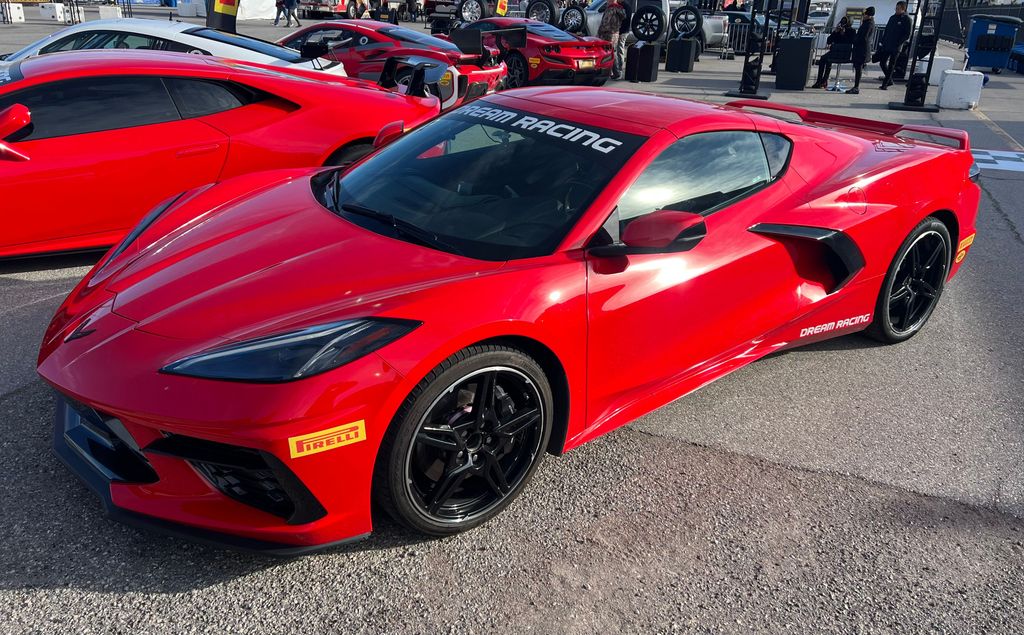
5. **2020 Chevrolet Corvette C8 Z51**While automotive purists may endlessly debate whether the Corvette genuinely qualifies as a muscle car, its undeniable American heritage, unwavering performance focus, and deep historical connections to the muscle car era unequivocally earn it a prominent place on this list. This is especially true given its shared engine architecture with several high-performance Camaro models. The 2020 Chevrolet Corvette C8, particularly with the Z51 Performance Package, represents arguably the most revolutionary leap in the model’s nearly 70-year history, fundamentally transforming its performance capabilities through a bold adoption of a mid-engine layout.
At the heart of the C8 Corvette is the naturally aspirated 6.2-liter LT2 V8 engine, producing a robust 495 horsepower and 470 lb-ft of torque when equipped with the Z51 package’s performance exhaust system. While these numbers might appear modest when compared to some of the supercharged behemoths on this list, the C8’s mid-engine configuration and sophisticated dual-clutch transmission enable it to deploy its power with remarkable efficiency and precision. The result is a blistering 0-60 mph time of approximately 2.9 seconds and a quarter-mile sprint in about 11.2 seconds at 122 mph, figures that confidently rival supercars costing many times more.
The Z51 Performance Package significantly elevates the base C8’s already impressive attributes. It includes a more aggressive final drive ratio, an electronic limited-slip differential, larger Brembo brakes with four-piston monobloc calipers, enhanced cooling systems, specific axle ratios, performance suspension tuning, and Michelin Pilot Sport 4S tires specifically developed for the Corvette. An aerodynamic kit is also part of the package, generating genuine downforce at high speeds, which markedly improves stability and cornering grip. This mid-engine architecture fundamentally transforms the driving experience, offering near-perfect weight distribution, exceptional rotational response, and remarkable stability under extreme braking and acceleration, achieving cornering forces exceeding 1.0g – territory previously exclusive to dedicated sports cars and exotics. The C8 Corvette, with its exotic car performance and muscle car accessibility, stands as one of the most significant American performance cars ever created, demonstrating General Motors’ commitment to global performance relevance.
Continuing our journey into the heart of American performance, we now turn our attention to the next five titans that have shaped the muscle car landscape, showcasing how these vehicles master speed, handling, and engineering prowess against global competitors. These machines don’t just carry a legacy; they actively define the evolution of what an American performance car can be, from breaking top-speed barriers to redefining track capability, all while offering a distinct value proposition that challenges the established order of the automotive world.
Car Model Information: 2024 RAM 1500 Laramie
Name: Chevrolet Corvette (C8)
Caption: Chevrolet Corvette (C8) Stingray
Aka: GMSV Chevrolet Corvette (Australia)
Manufacturer: Chevrolet
Production: February 2020–present
ModelYears: 2020–present
Assembly: Bowling Green, Kentucky
Designer: Tom Peters (2015)
Class: Sports Car
BodyStyle: targa top,retractable hardtop
Powerout: {{cvt,490,–,495,hp,kW PS,0
Layout: Rear mid-engine, rear-wheel-drive layout,Mid-engine, four-wheel-drive layout
Engine: General Motors LS-based small-block engine#LT2,crossplane,Overhead valve engine,V8 engine
Motor: Synchronous motor#Permanent-magnet
Battery: Kilowatt-hour
Transmission: TREMEC Corporation
Drivetrain: Hybrid vehicle drivetrain#Through the Road (TTR) hybrid
Wheelbase: cvt
Length: cvt
Width: cvt
Height: cvt
Weight: cvt
Sp: us
Predecessor: Chevrolet Corvette (C7)
Platform: General Motors Y platform#Second Y platform
Categories: All Wikipedia articles needing clarification, All Wikipedia articles written in American English, All articles with unsourced statements, Articles with short description, Articles with unsourced statements from January 2025
Summary: The Chevrolet Corvette (C8) is the eighth generation of the Corvette sports car manufactured by American automobile manufacturer Chevrolet. It is the first rear mid-engine Corvette since the model’s introduction in 1953, differing from the traditional front mid-engine design started in 1963. The C8 was announced in April 2019, and the coupe made its official debut on July 18, 2019, in Tustin, California. The convertible made its debut in October 2019 during a media event at the Kennedy Space Center to coincide with the 50th anniversary of the Apollo 11 mission. Production officially began on February 3, 2020, delayed by the 2019 General Motors strike.
The racing version, the Chevrolet Corvette C8.R, debuted in July 2019 and won the 2023 FIA World Endurance Championship.
Get more information about: Chevrolet Corvette (C8)
Buying a high-performing used car >>>
Brand: Chevrolet Model: Corvette C8
Price: $37,798 Mileage: 34,409 mi.

6. **2013 Ford Shelby GT500**The 2013 Ford Shelby GT500 undeniably marked a watershed moment in the modern muscle car era, a formidable beast that shattered the elusive 200 mph barrier and delivered supercar-rivaling performance at a fraction of the cost. This iteration proudly stood as the most powerful production Mustang of its time, representing Ford’s emphatic response to the escalating horsepower wars waged with fierce rivals like Chevrolet and Dodge, thereby establishing an audacious new benchmark for American performance. It was a clear declaration that American muscle was not just about brute force, but also about refined speed and engineering acumen.
Beneath its aggressively bulging hood resided a hand-built 5.8-liter supercharged V8 engine, a marvel of engineering that produced a then-astonishing 662 horsepower and 631 lb-ft of torque. These figures were not just impressive for a muscle car; they confidently exceeded the outputs of many exotic supercars available in the same era. To forge this powerhouse, Ford’s Special Vehicle Team (SVT) engineers meticulously revised nearly every component, starting from the previous GT500’s 5.4-liter block, increasing displacement, implementing a significantly larger 2.3-liter TVS supercharger, and integrating a high-flow cooling system complete with an enlarged intercooler. The culmination of these efforts was the most potent production V8 engine available at the time of its release.
This prodigious power was expertly channeled through a reinforced Tremec six-speed manual transmission to a beefed-up rear differential, enabling the GT500 to rocket from 0-60 mph in a blistering 3.5 seconds and conquer the quarter-mile in a mere 11.6 seconds at approximately 125 mph. What arguably solidified its legendary status, however, was its verified top speed of 202 mph, making it the first factory Mustang to unequivocally break the formidable 200 mph barrier. This monumental feat demanded extensive aerodynamic development to ensure unwavering high-speed stability, a testament to Ford’s commitment to not just raw power, but also control at extreme velocities. Unlike earlier generations that focused almost exclusively on straight-line performance, the 2013 GT500 offered remarkable handling capabilities, particularly with the optional Performance Package, which included electronically adjustable Bilstein dampers, a Torsen limited-slip differential, and unique tuning that dramatically improved the car’s behavior in corners. The further addition of a Track Package provided enhanced cooling for the engine, transmission, and differential, along with upgraded brake components designed to endure the sustained abuse of circuit driving.
Car Model Information: 2024 RAM 1500 Laramie
Name: Shelby Mustang
Caption: 1965 Shelby Mustang GT350
Manufacturer: Unbulleted list
Aka: Unbulleted list
Production: Unbulleted list
Designer: John Chun
Assembly: Unbulleted list
Class: Unbulleted list
Platform: Unbulleted list
Related: Ford Mustang (first generation),Ford Mustang (fifth generation)
Layout: Front-engine, rear-wheel-drive layout
Categories: 1970s cars, 2000s cars, 2010s cars, 2020s cars, All Wikipedia articles written in American English
Summary: The Shelby Mustang is a high-performance variant of the Ford Mustang built by Shelby American from 1965 to 1967 and by the Ford Motor Company from 1968 to 1970.
In 2005, Ford revived the Shelby nameplate for a high-performance model of the fifth-generation Ford Mustang.
Get more information about: Shelby Mustang
Buying a high-performing used car >>>
Brand: Ford Model: Shelby GT500
Price: $37,798 Mileage: 34,409 mi.
Read more about: Lost in Time: Uncovering the Eerie, Dust-Laden Legacy of an Abandoned Classic Car Museum

7. **2021 Dodge Charger SRT Hellcat Redeye**The 2021 Dodge Charger SRT Hellcat Redeye stands as a truly remarkable anomaly in the automotive world: a full-size, four-door sedan that astonishingly delivers performance figures capable of embarrassing many purpose-built sports cars. As the most powerful and fastest mass-produced sedan ever to roll off an assembly line, the Charger Hellcat Redeye represents the absolute culmination of Dodge’s unwavering commitment to extreme performance, triumphantly defying conventional automotive categorization. It’s a machine that confidently asks, “Why can’t a family car be a hypercar slayer?”
Powering this family-friendly missile is a monstrous supercharged 6.2-liter HEMI V8 engine, an engineering marvel that unleashes a staggering 797 horsepower and 707 lb-ft of torque. This isn’t merely a tweaked version of the standard Hellcat engine; it’s a deeply enhanced powerplant, incorporating numerous high-performance components directly from the limited-production Challenger Demon. Key upgrades include a significantly larger 2.7-liter supercharger—a notable increase over the standard Hellcat’s 2.4-liter unit—coupled with increased boost pressure soaring to 14.5 psi from 11.6 psi. Furthermore, it boasts a higher 6,500 rpm redline and strengthened internal components meticulously engineered to withstand the immense stresses generated by such prodigious output, ensuring both durability and unrelenting power delivery.
This explosive power enables the Charger Redeye to accelerate from 0-60 mph in approximately 3.5 seconds, devour the quarter-mile in a breathtaking 10.6 seconds at 129 mph, and ultimately achieve a verified top speed of 203 mph, thereby earning its crown as the fastest production sedan in the world. These figures are all the more impressive when one considers that the car weighs approximately 4,600 pounds and offers genuine five-passenger seating capability, combining ludicrous speed with everyday practicality. To effectively transfer this immense power to the pavement, Dodge engineers implemented numerous drivetrain upgrades, including a robust eight-speed automatic transmission, a more durable limited-slip differential, and specially developed 305/35ZR20 Pirelli P-Zero tires mounted on formidable 20×11-inch wheels. The adaptive suspension system features three-mode Bilstein dampers, which can be precisely adjusted for comfort, sport, or track use, while massive Brembo brakes, featuring six-piston front calipers with 15.7-inch rotors, provide fade-resistant stopping power even under the most demanding conditions. Visually distinguishing the Redeye are its functional hood scoop, a distinctive mail-slot grille opening designed for improved cooling, and flared fenders to accommodate the wider tires, especially with the available Widebody package that adds 3.5 inches of total width for enhanced stability and an even more menacing presence.
Car Model Information: 2024 RAM 1500 Laramie
Name: Dodge Charger
Caption: 1969 Dodge Charger
Manufacturer: Dodge
Production: 1966–1978,1981–1987,2005–present
ModelYears: 1966–1978,1982–1987,2006–present
Categories: 1960s cars, 1970s cars, 1980s cars, 2000s cars, 2010s cars
Summary: The Dodge Charger is a model of automobile marketed by Dodge in various forms over eight generations since 1966.
The first Charger was a show car in 1964. A 1965 Charger II concept car resembled the 1966 production version.
In the United States, the Charger nameplate has been used on mid-size cars, personal luxury coupes, subcompact hatchbacks, and full-size sedans.
Get more information about: Dodge Charger
Buying a high-performing used car >>>
Brand: Dodge Model: Charger SRT Hellcat Redeye
Price: $37,798 Mileage: 34,409 mi.
Read more about: Hulk Hogan’s Lasting Legacy: An In-Depth Look at His World-Class Collection of Mopar Muscle Cars and Beyond
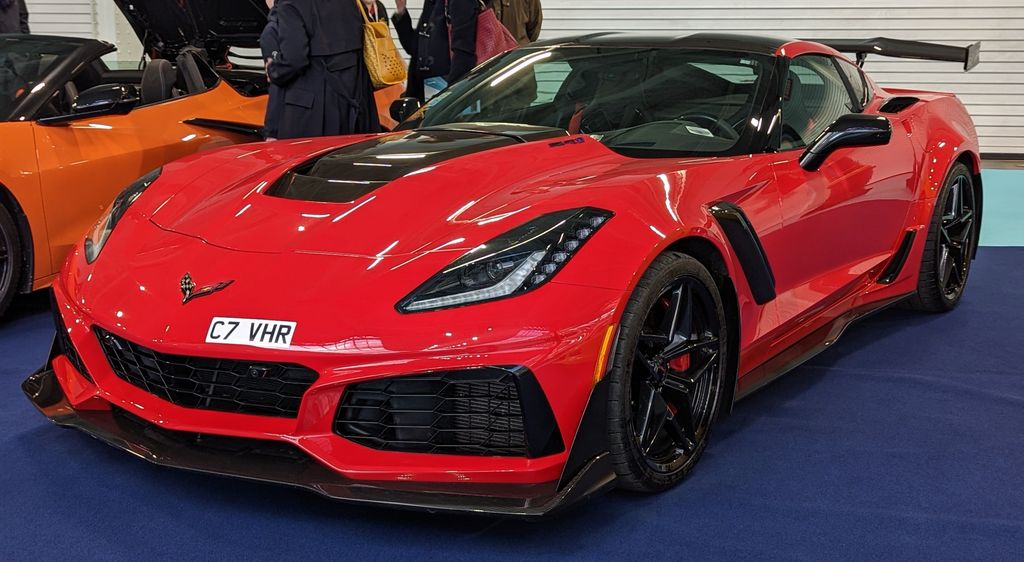
8. **2019 Chevrolet Corvette ZR1**The 2019 Chevrolet Corvette ZR1 stands as the ultimate, definitive expression of front-engine Corvette performance, a glorious culmination of six decades of relentless Corvette development and engineering ingenuity. As the powerful swan song for the C7 generation before the revolutionary mid-engine C8 debuted, the ZR1 heroically pushed the boundaries of what was conceivable with a traditional front-engine, rear-wheel-drive layout, delivering hypercar-level performance at a mere fraction of the cost of its European rivals. It was a testament to American ambition, proving that world-class performance could be both accessible and utterly breathtaking.
At the very heart of the ZR1 beat the fearsome LT5 engine, a masterpiece of American engineering: a hand-built 6.2-liter V8 featuring a massive 2.65-liter Eaton supercharger that towered so high, it dramatically protruded through the carbon-fiber hood, instantly signaling its aggressive intent. This potent powerplant generated an astonishing 755 horsepower and 715 lb-ft of torque, unequivocally making it the most powerful production Corvette ever unleashed onto the market. Available with either a precise seven-speed manual transmission or an ultra-fast eight-speed automatic, the ZR1 could rocket from 0-60 mph in as little as 2.85 seconds and conquer the quarter-mile in approximately 10.6 seconds at 134 mph.
Perhaps even more impressive than its blistering straight-line acceleration was the ZR1’s verified top speed of 212 mph, a figure achieved through extensive, meticulous aerodynamic development. Customers had the choice between two distinct aero packages: the standard Low Wing, expertly optimized for outright top speed, or the available ZTK Performance Package, which featured an adjustable High Wing generating over 950 pounds of downforce for maximum track performance. Both configurations showcased a comprehensive aerodynamic package, including a massive front splitter, functional dive planes, and sophisticated underbody venturi tunnels that created a vacuum effect at high speeds, ensuring unparalleled grip and stability. The ZR1’s exceptional performance extended far beyond drag strips and top speed runs; with the ZTK package’s aggressive aero, bespoke Michelin Pilot Sport Cup 2 tires, and specific suspension tuning, the ZR1 famously lapped Virginia International Raceway’s demanding Grand Course in a staggering 2:37.25, setting a production car record at the time. This remarkable achievement definitively demonstrated how the ZR1 had evolved far beyond the traditional muscle car ethos, transforming into a true world-class performance machine capable of fiercely competing with exotic European supercars on the most challenging road courses. To manage the extreme thermal loads generated by its immensely powerful engine, the ZR1 featured no fewer than 13 heat exchangers, including four new radiators compared to the already capable Corvette Z06, ensuring optimal operating temperatures under the most strenuous conditions. Its carbon ceramic brakes, measuring 15.5 inches up front with six-piston calipers and 15.3 inches in the rear with four-piston calipers, provided fade-resistant stopping power even under the most extreme track demands. As the last and most extreme front-engine Corvette, the 2019 ZR1 served as both a technological showcase and a fitting, spectacular finale to a layout that had defined the iconic model for an incredible 66 years, powerfully demonstrating the pinnacle of American performance engineering.
Car Model Information: 2024 RAM 1500 Laramie
Categories: All set index articles, Articles with short description, Set index articles, Short description with empty Wikidata description
Summary: ZR1, (or ZR-1), is a designation that has been used on several different generational models of the Chevrolet Corvette.
For the 3rd generation (C3), the ZR1 & ZR2 were special engine packages. Only 53 of these packages were optioned during the 1970 to 1972 model years.
For the 4th generation (C4), the ZR1 was the top-tier package that was available from 1990 to 1995, with a special engine designed in partnership with Lotus, after General Motors acquired Group Lotus, and with the objective of creating the world’s fastest production car. Other upgrades included steering, braking, specially designed Goodyear tires, and changes to body fascia.
For the 6th generation (C6), the ZR1 was a top-tier model package, the centerpiece of which was a new supercharged engine, with the supercharger visible through a window in the hood. There were numerous other upgrades to virtually every aspect of the car.
For the 7th generation (C7), the ZR1 was again the top-tier variant available, beginning in 2019. While improvements were made and there were significant changes to the body styling, the engine retained the same displacement and was again supercharged, with the unit visible through a hood window.
For the 8th generation (C8), the ZR1 was again on offer as the top variant for 2025, but major changes had been made to the car, not the least of which was to the Corvette layout, switching from a front mid-engine, rear-wheel-drive layout (FMR) to a rear mid-engine, rear-wheel-drive layout (RMR), moving the engine to the rear for the first time since the Corvette was first introduced 65 years prior. Major changes were also made to the engine’s crankshaft, the displacement was reduced, and in place of the supercharger, the motor now sported a pair of turbochargers. All this combined made for the most powerful engine in the company’s history.
Get more information about: Chevrolet Corvette ZR1
Buying a high-performing used car >>>
Brand: Chevrolet Model: Corvette ZR1
Price: $37,798 Mileage: 34,409 mi.
Read more about: The 10 Supercars That Have Just Roared Into Classic Status This Year – And Why They’re Absolutely Legendary
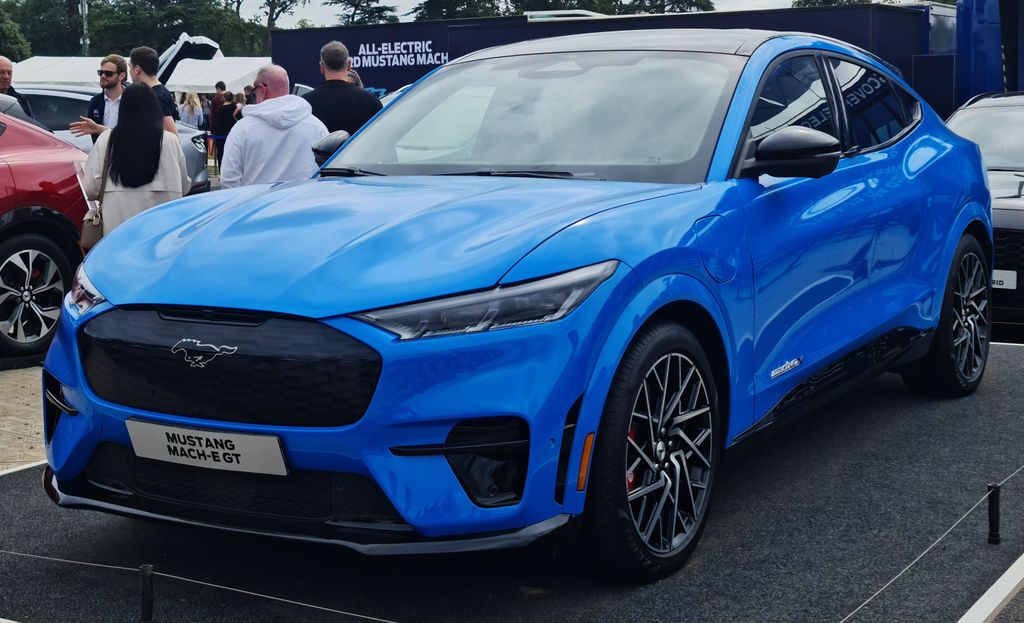
9. **2021 Ford Mustang Mach 1**The 2021 Ford Mustang Mach 1 proudly revives one of the most storied and revered nameplates in Mustang history, expertly bridging the gap between the capable standard Mustang GT and the more aggressively track-focused Shelby models. Unlike the original 1969 Mach 1, which primarily prioritized brutal straight-line performance with its available 428 Cobra Jet engine, the modern iteration delivers a significantly more balanced approach, seamlessly combining impressive acceleration with genuinely exceptional handling capabilities, making it a true dual-threat on both road and track.
Powering the heart of the Mach 1 is a specially calibrated version of Ford’s renowned 5.0-liter Coyote V8 engine, an engineering marvel producing a robust 480 horsepower and 420 lb-ft of torque. This represents a noteworthy 20 horsepower increase over the standard Mustang GT, a boost achieved courtesy of an open air induction system, a sophisticated intake manifold, and larger 87mm throttle bodies, all directly sourced from the revered Shelby GT350. Discerning customers have the choice between a precise six-speed manual transmission, also borrowed from the GT350 and complete with rev-matching capability for seamless downshifts, or an advanced 10-speed automatic transmission featuring a unique calibration specifically tailored for exhilarating performance driving. With either transmission, the Mach 1 accelerates from 0-60 mph in approximately 4.2 seconds and confidently completes the quarter-mile in around 12.6 seconds at 115 mph. While these figures may not quite match the supercharged fury of the Shelby GT500, they represent a substantial performance improvement over the standard GT and deliver a level of performance that would have been deemed impossible for a factory Mustang just a decade earlier.
What truly elevates the Mach 1 beyond its standard brethren are its comprehensive, track-focused chassis enhancements. The standard Handling Package includes a higher-downforce front splitter, a larger and more aggressive rear spoiler, wider and lighter wheels, and unique chassis tuning featuring stiffer springs and anti-roll bars, all working in concert to improve agility and grip. For the most demanding enthusiasts, the available Handling Package further amplifies these improvements with an even larger front splitter, a more prominent rear spoiler adorned with a Gurney flap, specialized wheel lip moldings, and adjustable strut top mounts that allow for fine-tuning of front camber settings, optimizing the car for specific track conditions. Crucially, cooling system improvements, directly borrowed and adapted from the high-performance Shelby models, ensure that the Mach 1 can confidently handle extended track sessions without succumbing to the overheating issues that plagued some earlier performance Mustangs. Two additional side heat exchangers, a dedicated rear axle cooling system, a lower diffuser derived from the Shelby GT500, and a redesigned front fascia with significantly larger openings all collectively contribute to dramatically improved thermal management, allowing the Mach 1 to perform at its peak for longer. Visually, the Mach 1 respectfully pays homage to its rich heritage with unique styling cues, including distinctive hood stripes, bold side stripes featuring Mach 1 branding, and a grille with low-gloss Magnetic accents and faux lamp elements, all subtly reminiscent of the iconic original 1969 model. This combination of impressive straight-line speed, genuine track capability, and sophisticated on-road refinement cements the 2021 Mach 1 as a modern evolution of the muscle car concept, honoring its storied past while squarely meeting the elevated expectations of contemporary enthusiasts.
Car Model Information: 2024 RAM 1500 Laramie
Name: Ford Mustang Mach 1
Manufacturer: Ford Motor Company
Assembly: Dearborn, Michigan
Production: 1969–1978,2003–2004,2021–2023
Class: Muscle car
BodyStyle: coupe
Layout: FR layout
Categories: 1970s cars, 2000s cars, 2020s cars, All Wikipedia articles written in American English, All articles needing additional references
Summary: The Ford Mustang Mach 1 is a combination performance and appearance package offered as an option for the Ford Mustang.
It first appeared in August 1968 for the 1969 model year, and ran through 1978. After a long hiatus it briefly returned in 2003-2004, and most recently between 2021 and 2023.
The first generation of the package, available with various engines, debuted at its hottest, then was progressively eroded in performance as emissions controls, unleaded gas, fleet mileage quotas, and higher gasoline prices undercut the “horsepower wars” that had originally spurred the option. Similarly, early packages included other performance upgrades, such as suspension, that were deleted in subsequent model runs, leaving only a wide array of external and interior upgrades.
As part of a Ford heritage program, the Mach 1 package returned in 2003 as a high-performance version of the New Edge platform. Visual elements paying homage to the 1969 model were integrated into the design. This generation of the Mach 1 was discontinued after the 2004 model year, with the introduction of the fifth generation Mustang.
The Mach 1 returned again in 2021 in the sixth generation Mustang, offering marginally more power than the high-performance 5.0 L Coyote V-8 in the base GT V8, but borrowing front and rear subframes from the Shelby GT350 and various parts from it and the Shelby GT 500 models. It was produced until the debut of the seventh generation Mustang following the 2023 model year.
Get more information about: Ford Mustang Mach 1
Buying a high-performing used car >>>
Brand: Ford Model: Mustang Mach 1
Price: $37,798 Mileage: 34,409 mi.
Read more about: The Ultimate Status Symbol? Unpacking the Millions Collectors Pay for Reborn Classic Cars
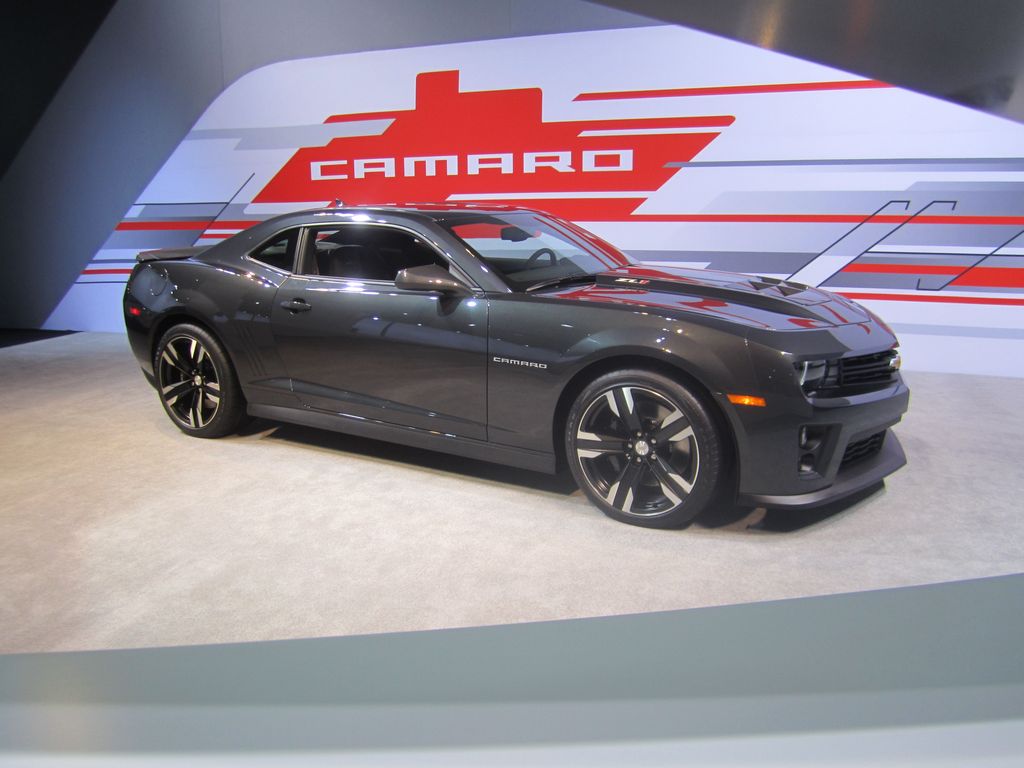
10. **2012 Chevrolet Camaro ZL1**The 2012 Chevrolet Camaro ZL1 marked a truly significant milestone in the burgeoning modern muscle car era, powerfully reviving a legendary nameplate from the glorious original muscle car golden age and establishing formidable new benchmarks for American performance. As the very first modern Camaro to proudly wear the coveted ZL1 badge—a designation historically reserved for the ultra-rare 1969 models equipped with the all-aluminum 427 cubic inch racing engine—this fifth-generation Camaro had enormous expectations to meet, and it delivered with a comprehensive, meticulously engineered performance package that extended far beyond mere straight-line speed. It was a triumphant return of a legend, designed to dominate on all fronts.
At the very heart of the ZL1 lurked a potent supercharged 6.2-liter LSA V8 engine, an engineering powerhouse producing an impressive 580 horsepower and 556 lb-ft of torque. These figures made it, at the time of its release, the most powerful production Camaro ever conceived, pushing the boundaries of what was achievable in a factory-built muscle car. This sophisticated powerplant featured an advanced Eaton supercharger, a highly efficient intercooler to manage intake temperatures, and numerous internal strengthening measures meticulously implemented to ensure unwavering reliability even under the most extreme and demanding driving conditions. Available with either a precise six-speed manual transmission or a quick-shifting six-speed automatic transmission, complete with steering wheel-mounted paddle shifters for enhanced driver engagement, the ZL1 demonstrated its prodigious power by accelerating from 0-60 mph in approximately 4.0 seconds and confidently completing the quarter-mile sprint in 12.1 seconds at 119 mph. These numbers not only placed it firmly in the upper echelons of performance cars but also highlighted its exceptional capability to deploy power effectively.
However, what truly set the ZL1 apart from previous Camaros and many of its contemporary muscle car rivals was its groundbreaking, sophisticated chassis technology. The ZL1 was the first production car to feature GM’s third-generation Magnetic Ride Control (MRC) dampers, a revolutionary system that could adjust damping forces up to 1,000 times per second, providing an extraordinary balance of ride comfort and razor-sharp handling. This advanced suspension, combined with GM’s Performance Traction Management (PTM) system—offering five distinct modes that precisely integrated magnetic ride control, launch control, traction control, and electronic stability control—transformed the ZL1 into a formidable track weapon. It was capable of delivering exceptional mechanical grip and precise control through corners, something traditionally not associated with large American muscle cars. Massive Brembo brakes, with six-piston front calipers and 14.6-inch rotors, provided fade-resistant stopping power, further enhancing its all-around performance credentials. The ZL1’s comprehensive package, blending immense power with cutting-edge chassis technology, not only revived a storied nameplate but also redefined expectations for what an American muscle car could achieve on both the street and the track, firmly cementing its place as an icon in automotive history.
Car Model Information: 2024 RAM 1500 Laramie
Name: Chevrolet Camaro
Manufacturer: Chevrolet
Production: 1966–2002,2009–2023
ModelYears: 1967–2002,2010–2024
Class: Pony car
BodyStyle: coupe,convertible
Platform: GM F platform,GM Zeta platform,GM Alpha platform
Layout: Front-engine, rear-wheel-drive layout
Categories: 1970s cars, 1980s cars, 1990s cars, 2+2 coupés, 2000s cars
Summary: The Chevrolet Camaro is a mid-size American automobile manufactured by Chevrolet, classified as a pony car. It first went on sale on September 29, 1966, for the 1967 model year and was designed to compete with the Ford Mustang. The Camaro shared its platform and major components with the Firebird, produced by General Motors’ Pontiac division that was also introduced for the 1967 model year.
Four distinct generations of the Camaro were developed before production ended in 2002. The nameplate was revived on a concept car that evolved into the fifth-generation Camaro; production started on March 16, 2009.
Production of the sixth generation of the Camaro ended in December 2023, for the 2024 model year.
Get more information about: Chevrolet Camaro
Buying a high-performing used car >>>
Brand: Chevrolet Model: Camaro ZL1
Price: $37,798 Mileage: 34,409 mi.
Read more about: These Are The Fastest Muscle Cars Ever: From Classic Legends to Modern Monsters
These ten machines, from the unbridled aggression of Dodge’s Demons to the sophisticated agility of Chevrolet’s Corvettes and Camaros, alongside Ford’s formidable Mustangs, collectively tell a compelling story. It’s a narrative of relentless innovation, a dedication to pushing the envelope of performance, and an unwavering commitment to delivering exhilarating driving experiences. They stand as irrefutable proof that American engineering, with its unique blend of raw power and increasingly refined technology, can not only stand toe-to-toe with the world’s most exclusive European exotics but often leave them in the rearview mirror. This fierce, friendly competition has fueled decades of automotive brilliance, securing American muscle cars an undeniable and celebrated place in the pantheon of global high-performance vehicles.

